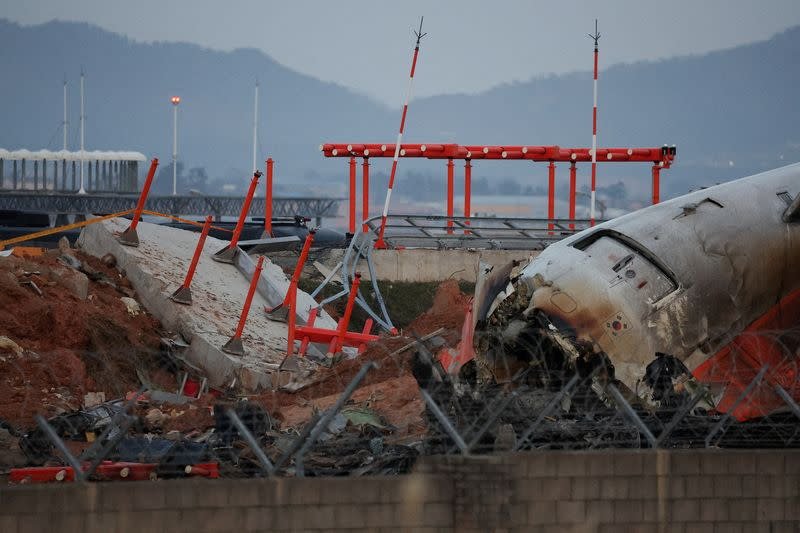South Korea’s investigation into the Jeju Air plane crash last month has revealed initial findings, including details of a suspected bird strike that contributed to the disaster. A preliminary accident report, submitted to the UN aviation agency and authorities in the United States, France, and Thailand, states that the investigation remains ongoing.
The deadly crash, which occurred on December 29, involved a Boeing 737-800 jet traveling from Bangkok to Muan International Airport. During its final approach, the aircraft overshot the runway, made an emergency belly landing, and crashed into a localizer structure. Tragically, all but two of the 181 people aboard lost their lives.
The localizer, a navigation aid system at the airport, may have played a significant role in the crash, with experts highlighting its reinforced concrete and earth structure as a contributing factor.
The preliminary report, which was shared with the victims’ families on Saturday, mentions that the pilots observed a flock of birds during their final approach. The exact time of the bird strike remains unclear, but the aircraft made an emergency Mayday declaration for a bird strike while executing a go-around maneuver. Both engines showed signs of bird remains, including feathers and blood stains.
After the crash, fire and a partial explosion occurred, with both engines buried in the embankment’s soil mound. The fuselage parts were scattered up to 200 meters away from the impact site. The report also notes that the two data recorders ceased recording just before the pilots declared Mayday, though the exact reason for this remains unknown. At the time of the black boxes stopping, the aircraft was at an altitude of 152 meters and traveling at 161 knots.
The investigation continues with a focus on determining the precise cause of the crash, including the role of the bird strike, engine performance, and localizer structure.










